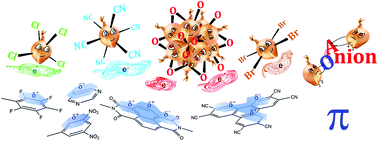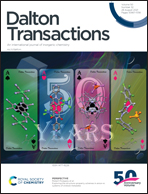Exploring the structure–property schemes in anion–π systems of d-block metalates
Abstract
Anion–π based compounds, materials, and processes have gained significant interest due to the diversity of their aesthetic non-covalent synthons, and thanks to their significance in biological systems, catalytic processes, anion binding and sensing, or the supramolecular organization of hierarchical architectures. While systems based on typical inorganic anions or organic residues have been widely reviewed in recent years, those involving anionic d metal comlexes as the main components have been treated with a rather secondary interest. However, actively exploring the new systems of the latter type we have recognized systematic advances in the field. As a result, in the current review we describe the landscape that has recently emerged. Focusing on the established groups of π-acidic species, i.e. polycarbonitirles, polyazines, polyazine N-oxides, diimide derivatives, fluoroarenes, and nitroarenes, we explore and discuss anion–π crystal engineering together with the structure–property schemes important from the standpoint of charge transfer (CT) and electron transfer (ET), magnetism, luminescence, reactivity and catalysis, and the construction of core–shell crystalline composites.

- This article is part of the themed collection: 2021 Frontier and Perspective articles


 Please wait while we load your content...
Please wait while we load your content...